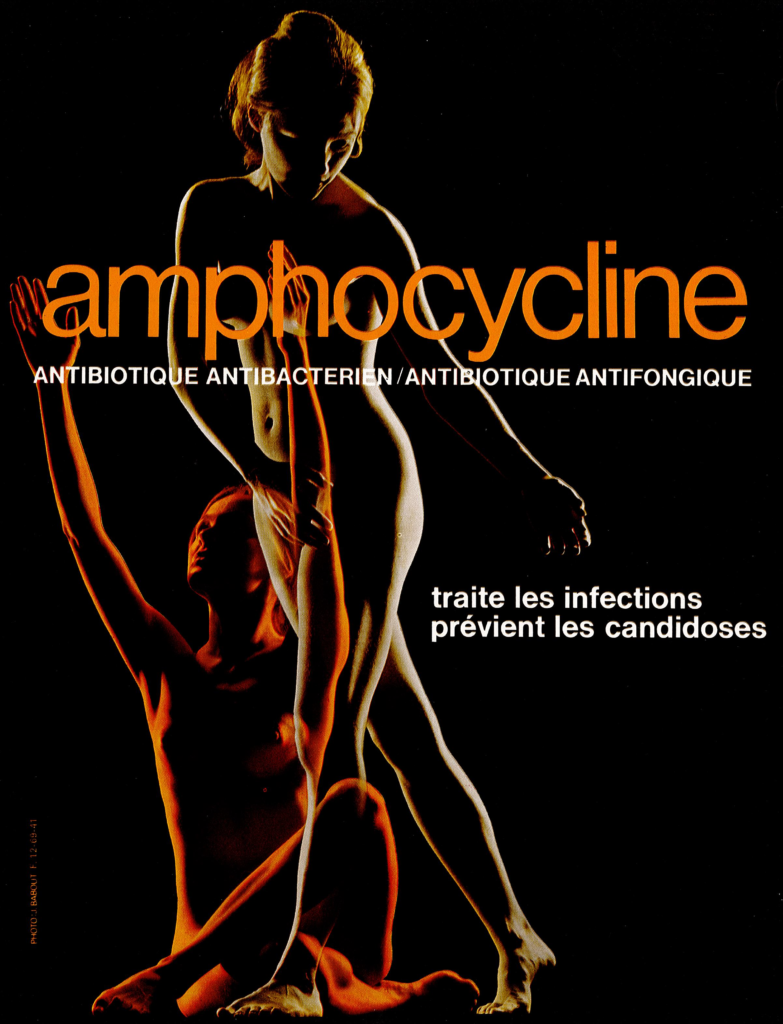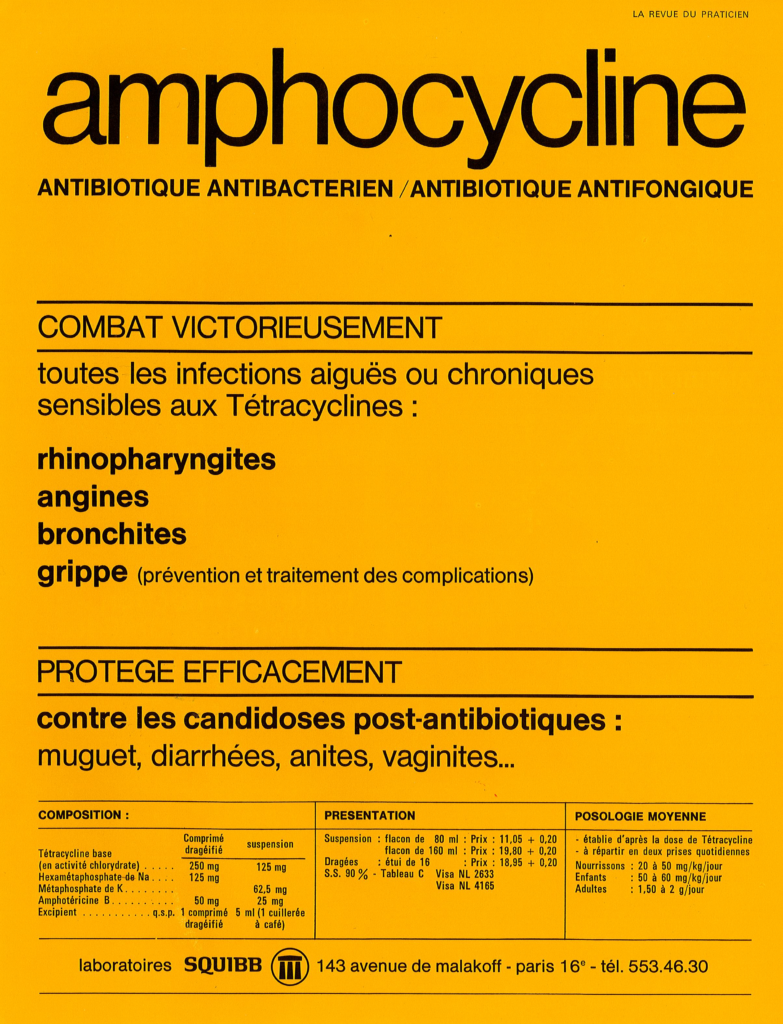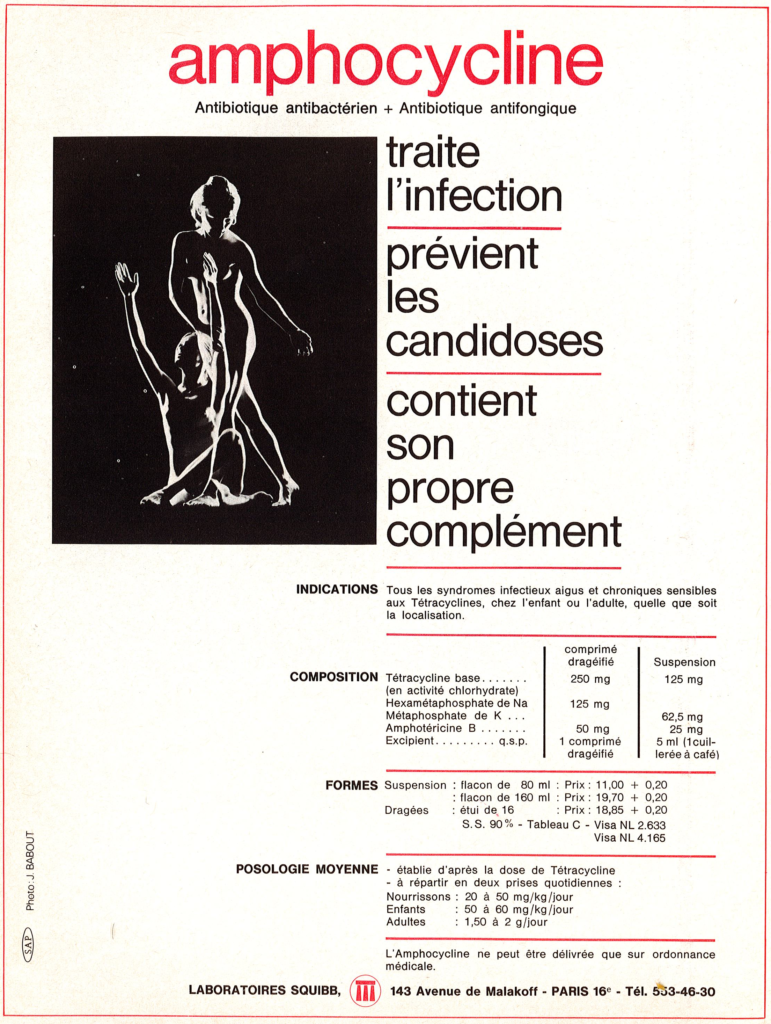Amphocycline® contained an antibacterial agent (tetracycline) and an antifungal agent (amphotericin B). A combination of amphotericin B and tetracycline, hence the name Amphocycline®. It is a classical drug to treat vulvovaginitis in women (evoked in the splendid illustration). In fact, the drug was used to treat a variety of acute bacterial infections, such as bronchitis, rhinopharyngitis, and to prevent from candidosis or other fungal infections. The drug was removed from the market in 2008, but the two active ingredients remain largely used today.
Amphotericin B is used for the treatment of invasive fungal infections since the late 1950s. It is an outstanding natural product, a polyene macrolide, extracted from cultures of the actinomycete Streptomyces nodosus. It exhibits a broad spectrum of activity, a low resistance rate, and an excellent clinical action (it is essentially known as Fungizone®). The compound binds to the main sterol in the cytoplasmic membrane of fungi (ergosterol), leading to the formation of pores and channels in the plasma membrane which cause the release of electrolytes and then cell death. Novel lipid formulations of amphotericin B have been developed to limit the nephrotoxicity and to improve tolerability of the compound. It remains the gold standard for the treatment of invasive fungal infections.
Tetracycline antibiotics have a broad range of activity against many microorganisms. Although there are alternative antibiotics available with less side effects, they remain quite largely used. For example, the tetracycline antibiotic minocycline is used to treat diverse types of bacterial infections (in cases of diarrhea or candidiasis), as well as the semisynthetic tetracycline antibiotic doxycycline, belonging to the same chemical family. Synergistic effects have been reported when combining a tetracycline antibiotic and a fungicide.





